- Exhibition space
- Museum
Tue, Wed, Thu, Fri, Sat, Sun and on public holidays 10:00-18:00
Opening hours during the Gallery Days 16-18.5.2025
Fri: All exhibition venues are open until 10pm.
Sat: All exhibition venues are open from 11am - 7pm.
Sun: All exhibition venues are open from 11am - 5pm.
Exceptions
Hashtags: #kunsthausgraz
- accessible toilets
- hearing aids available
- assistance available if needed
- everything is accessible
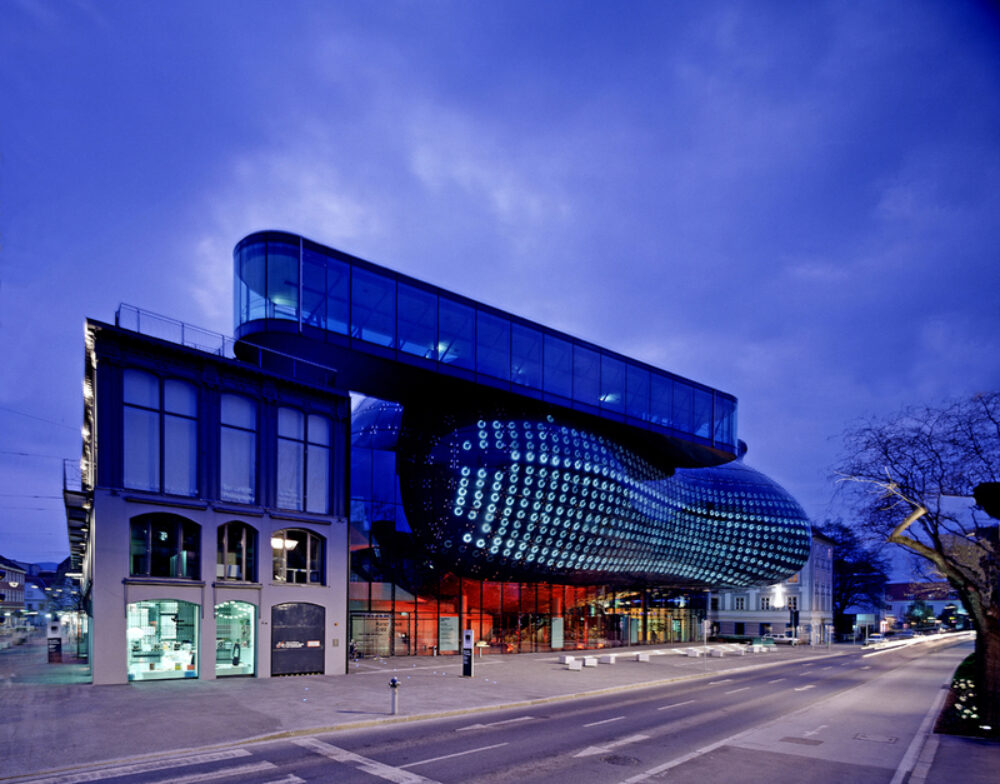
Kunsthaus Graz, Nachtaufnahme, Foto: Universalmuseum Joanneum/Eduardo Martinez
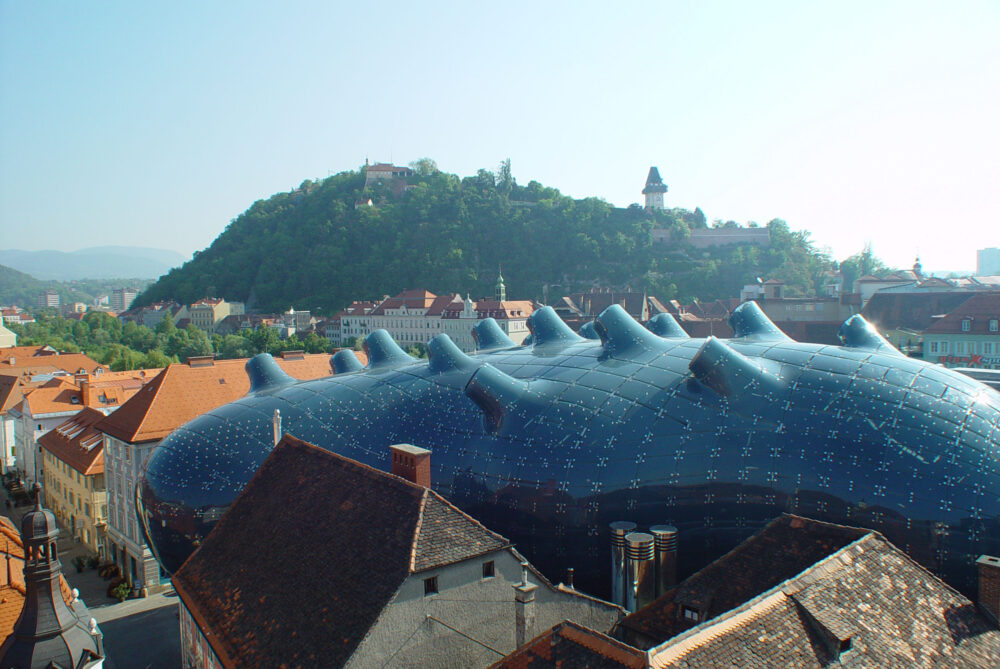
Kunsthaus Graz, Blase und Schlossberg, Foto: Zepp-Cam. 2004/Graz, Austria
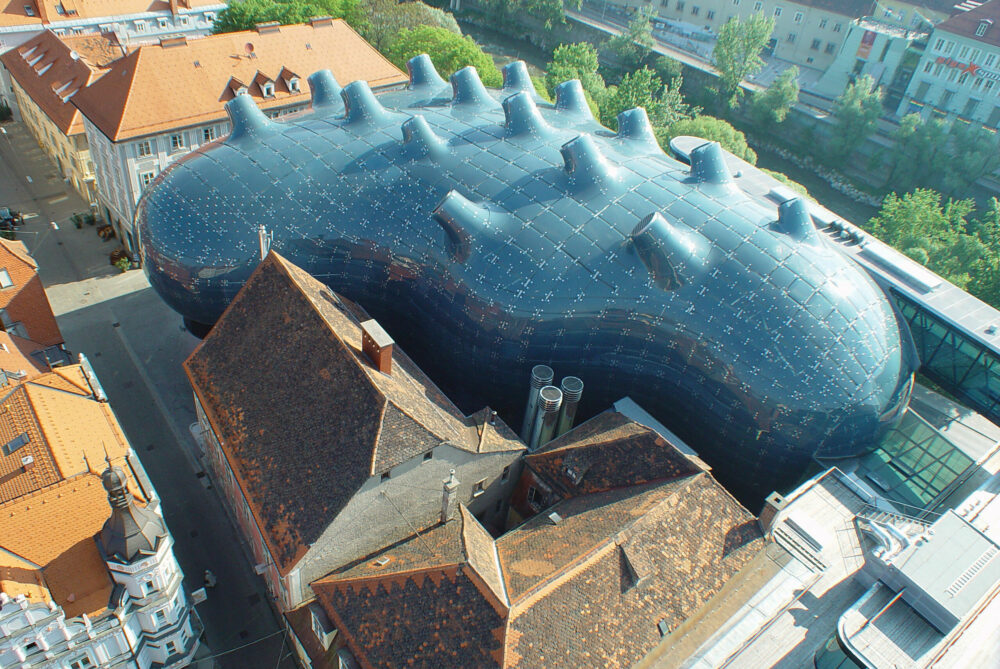
Kunsthaus Graz, Vogelperspektive, Foto: Zepp-Cam. 2004/Graz, Austria
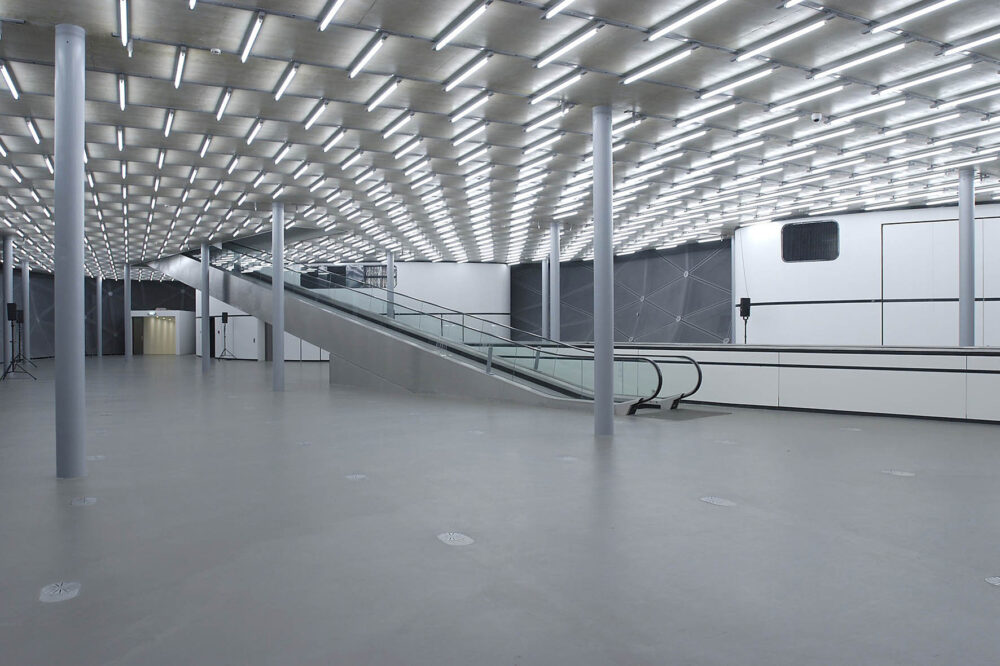
Kunsthaus Graz, Space02, Foto: Universalmuseum Joanneum/N. Lackner
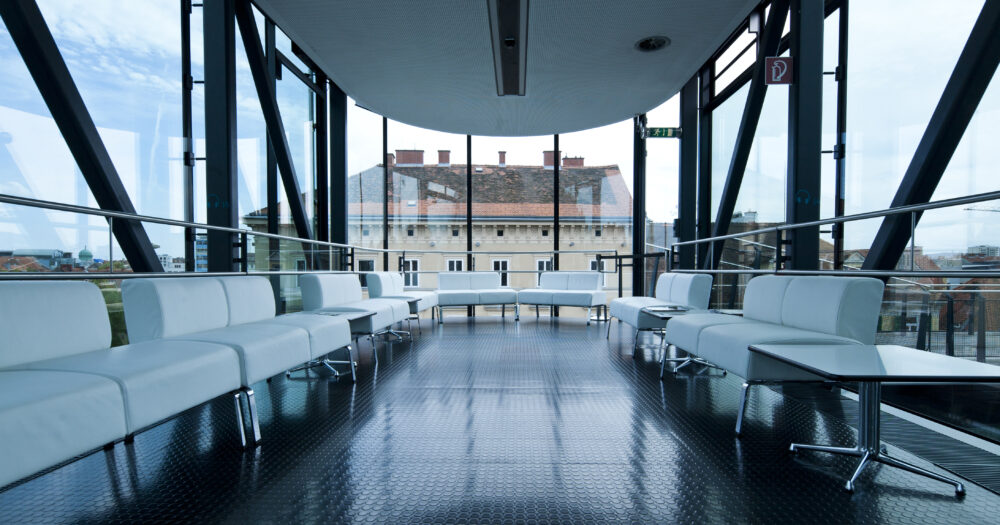
Kunsthaus Graz, Needle © Christian Plach
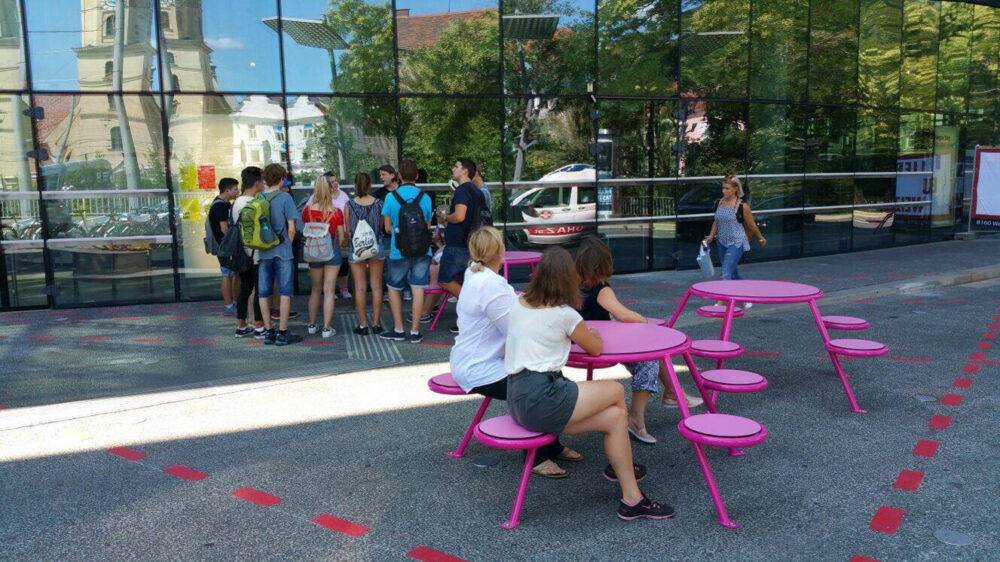
Kunsthaus Graz, Vorplatz mit Möbeln von "Vestre", Foto: Universalmuseum Joanneum/C. Sondergelt
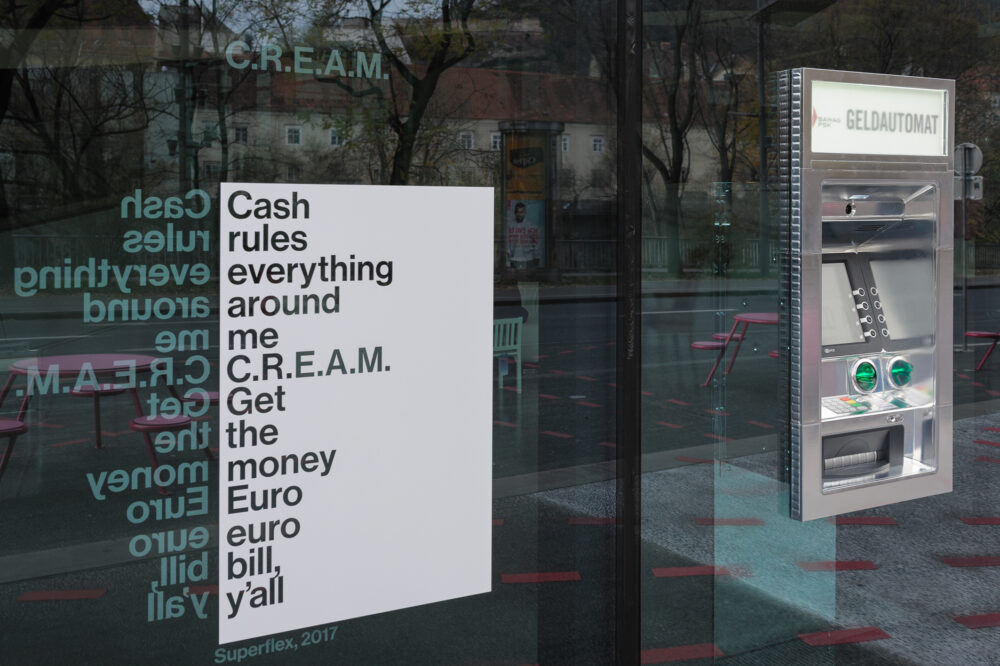
Kunsthaus-Bankomat, "C.R.E.A.M.", Superflex, Foto: Universalmuseum Joanneum/N. Lackner
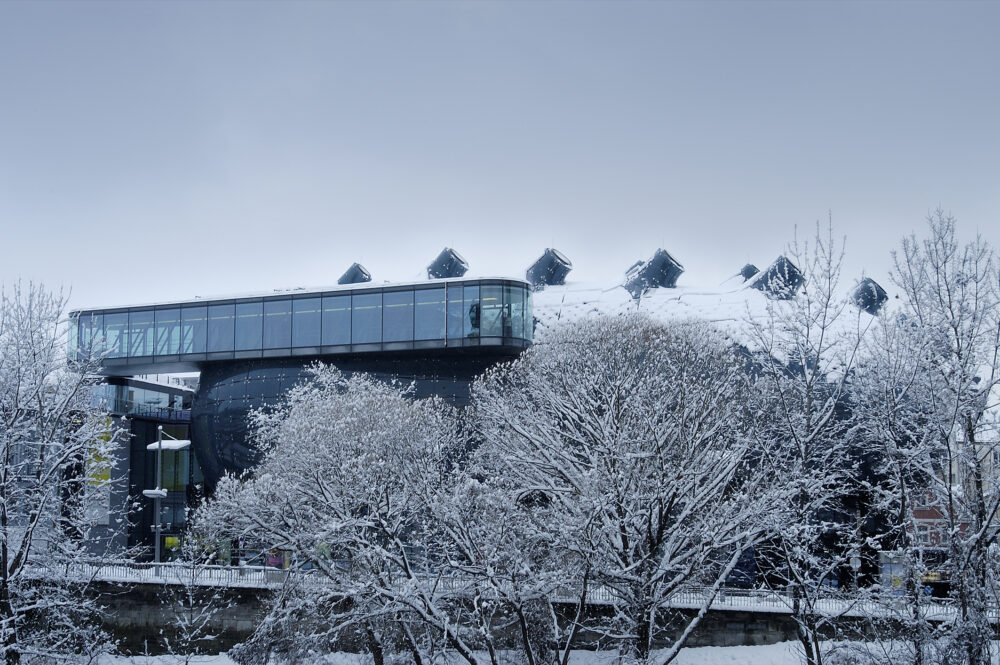
Kunsthaus Graz im Schnee, Foto: Universalmuseum Joanneum/N. Lackner
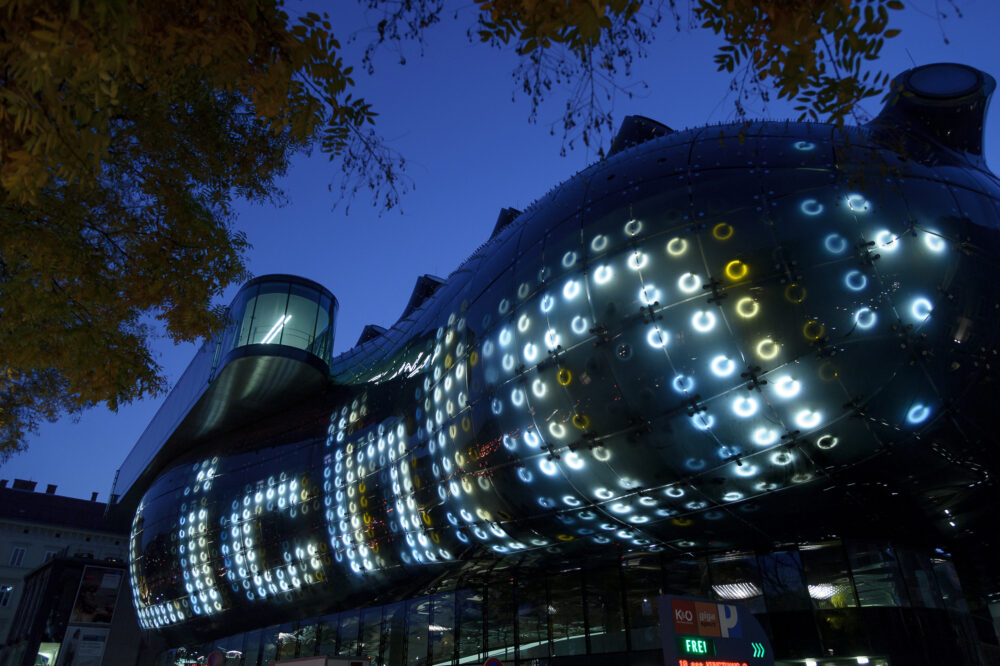
BIX-Fassade, LichtTelegramm, Foto: Universalmuseum Joanneum/N. Lackner
Kunsthaus Graz
The Kunsthaus Graz is an exhibition centre that combines international contemporary art with regional and local themes and objectives.
It stages exhibitions on current social issues, initiates the production of new artworks and realizes diverse educational projects. Further to this, it promotes discussion around art, design, architecture and exhibiting per se. In order to implement its visions, the Kunsthaus Graz works with a network of partner institutions—both locally and across the world.
We are committed to ensuring that everyone can share in art and culture, as is reflected in both our artistic programme and our comprehensive range of art education experiences. Kunsthaus Graz GmbH is owned in equal parts by the City of Graz and the Universalmuseum Joanneum GmbH, which in turn is a company owned by the Province of Styria.
- Exhibition
2/28/2025 - 8/24/2025
Freeing the Voices
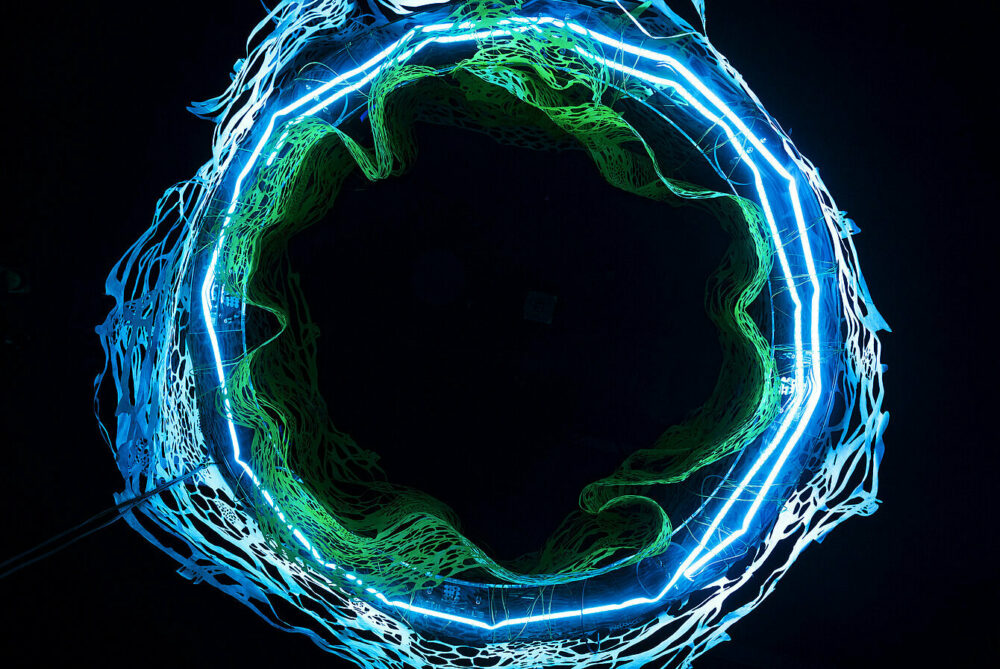
Spiral Fluctuations, Katja Goljat/Projekt Atol
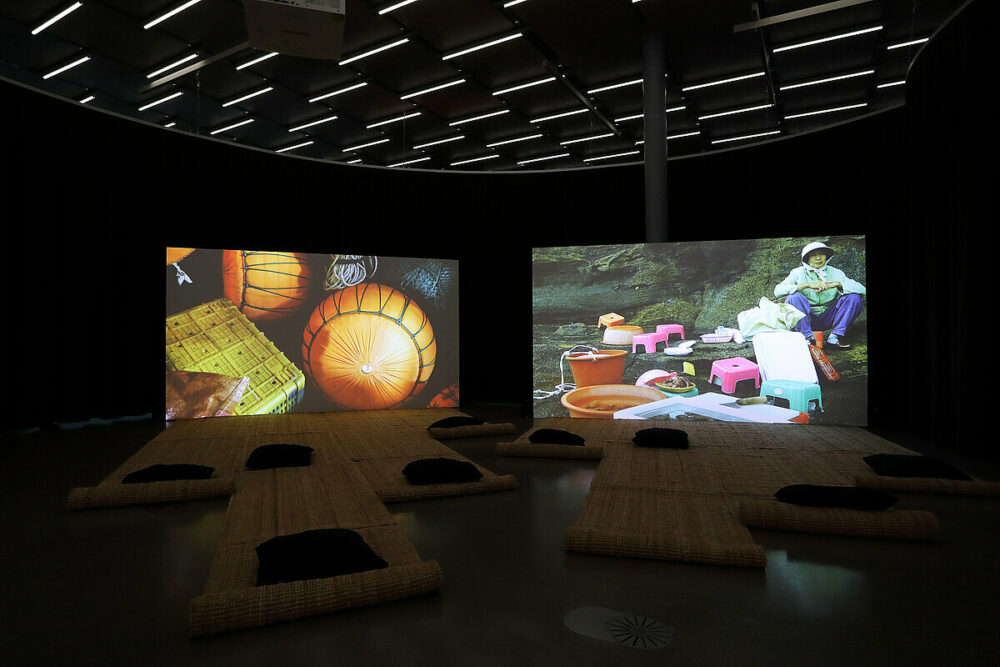
Ausstellungsansicht: Freeing the Voices, Foto: Kunsthaus Graz/J.J. Kucek
The exhibition Freeing the Voices begins with one voice, the scream of Marina Abramović – that is to say, one human being that grows during the exhibition into a multitude of mainly human voices, and ends with the voice of the midge in the work of Tao G. Vrhovec Sambolec. We do not hear the voice of the midge with our ears; its presence is in our radical listening. Listening is not the same as hearing. Its specificity lies in our attention and awareness of ourselves and others, human and non-human beings, and things.
Why is an exhibition about the voice so important today? The world we live in has become completely untuned. The multiplicity of crises and genocidal wars, together with the loss of the common space of bodies resonating with each other, have created a sense of suffocation and panic. On top of all this, a culture of silence has taken hold around us, the space for free speech is shrinking, and there are growing calls for a culture of cancellation. But this silencing, this censorship, is not the only means of control. We are subjected to a noise of information that overwhelms us even more. A noise in which the sense that would bind us together as a social body is silenced. In the face of all this, it is no longer enough to simply conclude that we are not speaking with our own voice, that there is always the voice of the master behind it. It is time for action, even if it is as inarticulate as shouting or murmuring.
Although there is no such thing as our own authentic voice, the liberation of our individual and collective voice is the horizon of the works exhibited. Liberating our voices does not mean finding a selfhood with which our voice corresponds perfectly. What we really liberate with the voice is our relationship to the world. The artworks in this exhibition attempt to decolonise the different voices of particular traditions, nations and their communities and landscapes, the voices of women, people of colour, people from the edges of Europe, and the voices of our individual bodies. In our case, liberating voices means breathing, shouting, poetising, singing, speaking and murmuring.
The works exhibited also raise awareness of the crisis of modernity and its rational constructs. Their language transcends universal concepts and embodies particular experiences and knowledge. A voice is always a particular voice. And there is no voice that cannot be heard, so the liberated voices are only the voices that are heard. And listening has the power to heal, to connect, and to resist.
- Artists:
- Noor Abed, Marina Abramović, Lawrence Abu Hamdan, Babi Badalov, selma banich, CO2... a couple of artists, VALIE EXPORT, Farhad Farzali, Essa Grayeb, Ida Hiršenfelder, Saodat Ismailova, Anna Jermolaewa, Mikhail Karikis, Anton Kats, Belinda Kazeem-Kamiński, Brandon LaBelle & Octavio Camargo, Katalin Ladik, Lucia Nimcová, Lala Raščić, Antoni Rayzhekov, Gerhard Rühm, Selma Selman, ŠKART & NONpractical Women, Mladen Stilinović, Irena Z. Tomažin, Nora Turato, Tao G. Vrhovec Sambolec
- curated by:
- Zdenka Badovinac
- Exhibition
11/15/2024 - 5/25/2025
Poetics of Power
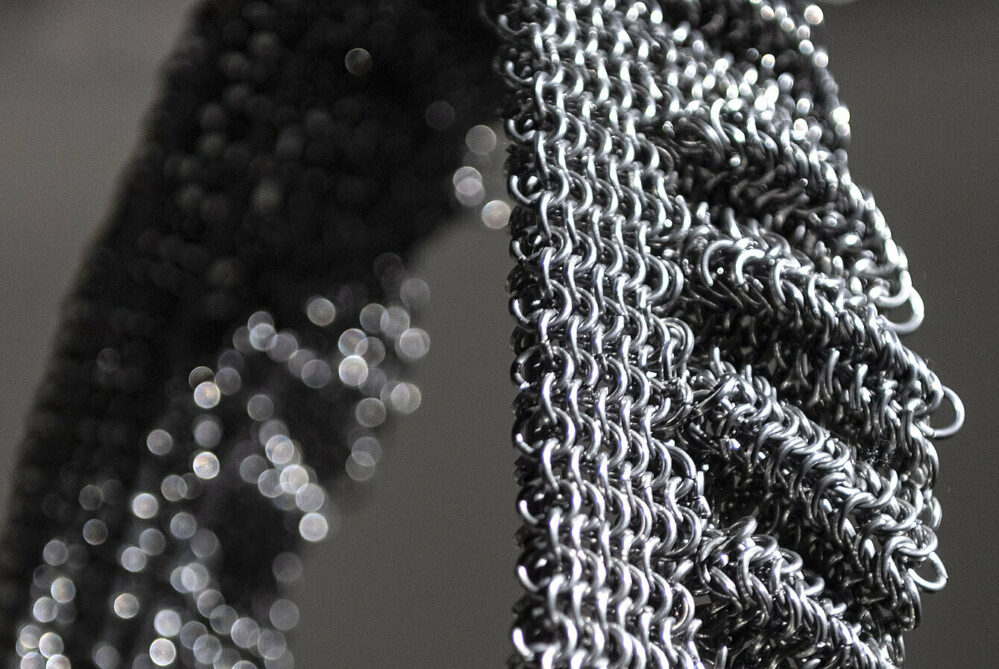
Ala Savashevich, Sew on your own, 2022, Courtesy of 66P Subjective Institution of Culture, Wrocław, Poland, Foto: Małgorzata Kujda
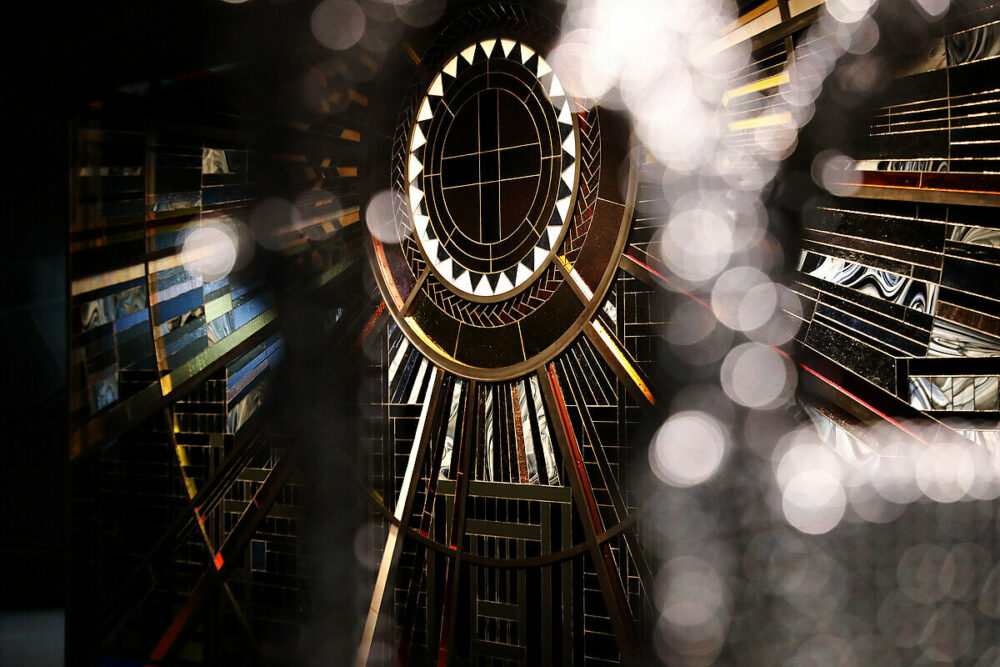
Ausstellungsansicht "Poetics of Power", Daria Koltsova "Tessellated Self" 2023, Foto: Kunsthaus Graz/J.J. Kucek
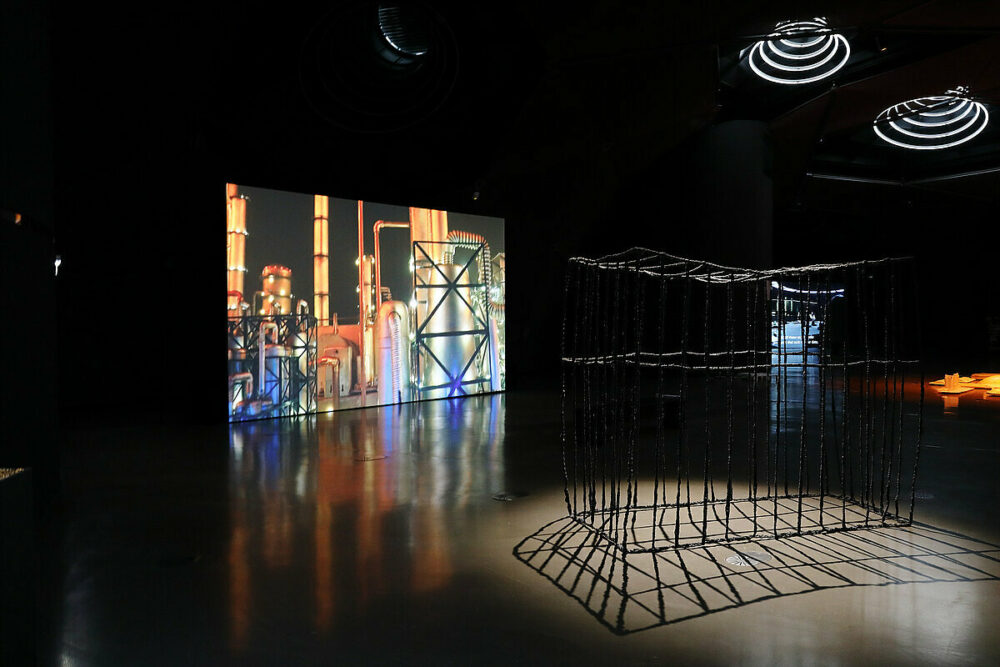
Ausstellungsansicht "Poetics of Power", vorne: Anna Zvyagintseva "The Cage", 2010 und Moniral Al Qadiri "Crude Eye", 2022, Foto: Kunsthaus Graz/J.J. Kucek
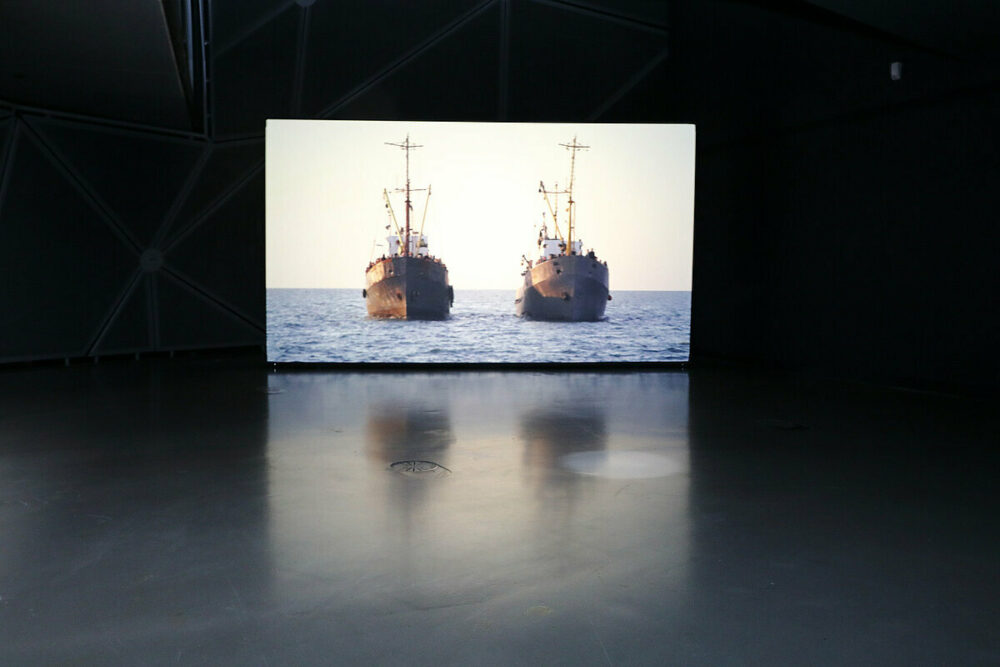
Ausstellungsansicht "Poetics of Power", Vajiko Chachkhiani "Lower than the Sky" 2021, Ein-Kanal-Video, Foto: Kunsthaus Graz/J.J. Kucek
The exhibition Poetics of Power aims to reveal certain power manifestations hidden in symbols, gestures and existing unquestioned relations or systems. It asserts the intricate and ambiguous nature of power, omnipresent in shaping interpersonal, cultural, national, and economic dynamics. The exhibition explores the poetic nature of power, acknowledging its pervasive influence yet emphasizing its tendency to lead to destruction.
Foucault states that “power is everywhere, not because it embraces everything, but because it comes from everywhere”.[1] Power is for that reason omnipresent, constantly in flux, reproduced and permanent. Examining diverse geographical and historical contexts sheds light on how power reveals and solidifies within social, economic, and political frameworks. Most clearly, it is manifested in asymmetries that occur when there is the imbalance of power, in economic relations between more powerful states and those lacking economic or even military power, or simply between individuals or social groups. Less visible is the power that lurks on the edges, part of the social networks, and taken as historical de-facto or reality. This contradictory nature of power becomes especially intriguing when considering its crystallization within certain systems, fostering stability. However, an intrinsic aspect of power is its immanent counterpart—resistance. The latter, dispersed and transformative, instigates change and facilitates the reconfiguration of systems.
The exhibition shows works that revolve around the poetic and alluring nature of power on one hand and the destructive face of power on the other. Through artistic approaches, it explores the gestures and imaginaries that sometimes obscure or conceal the power relations, simultaneously exposing anomalies and cracks where cultural imbalances and inequalities become apparent. Many of the featured works deal with authoritarian histories, distorted narratives, or fully eliminated knowledge, destruction of cultures, and construction of identities. The exhibition sheds light on power asymmetries that often result in exploitative relationships, defining them as colonial and neo-colonial relations that consequently give rise to conflicts and migratory flows. Themes such as war, refugees, crime, humanity, gender, children, mobility, and borders are explored and thematised within multidisciplinary works. These works span across various mediums, including photography, video, sculpture, and installation art. They offer the audience a chance to drift and reflect on a complex journey through time and history, encouraging engagement in the decoding and revelation of hidden or seemingly unquestionable relations.
- Artists:
- Yael Bartana, Vajiko Chachkhiani, Jošt Franko, Gabriela Golder, Cristian Inostroza, Grada Kilomba, Daria Koltsova, Goshka Macuga, Daniela Ortiz, Ahmet Öğüt, Erkan Özgen, Hannes Priesch, Monira al Qadiri, Zanny Begg und Oliver Ressler, Anna Zvyagintseva, Lukas Marxt, Ala Savashevich
- curated by:
- Andreja Hribernik & Nini Palavandishvili